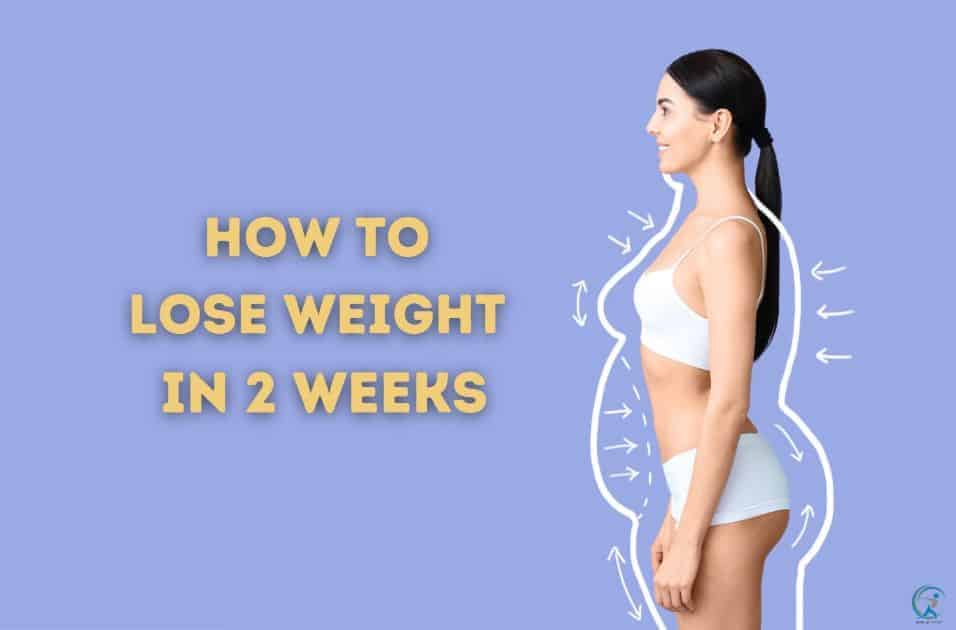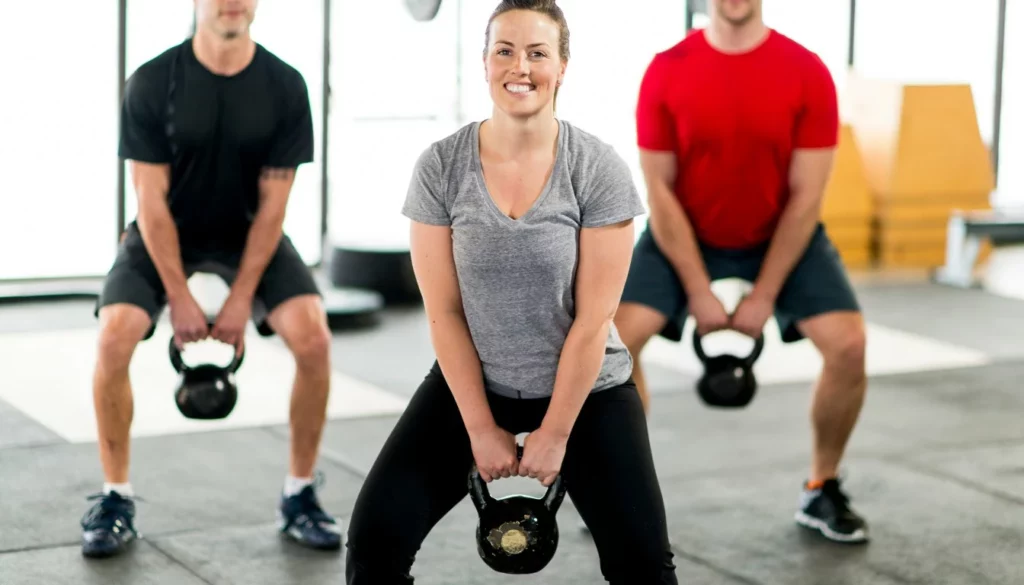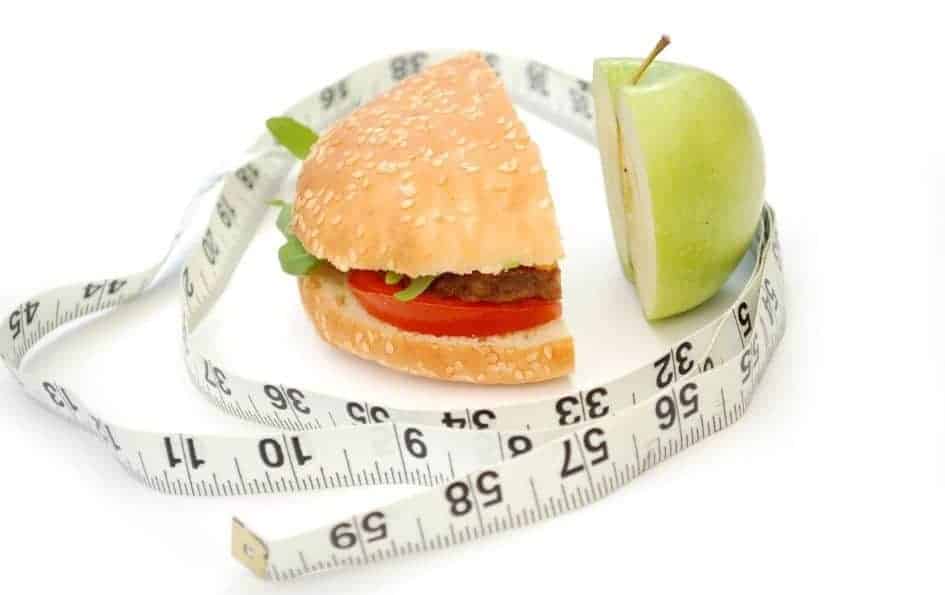Do you want to lose weight and feel more confident in 2 weeks? It’s tempting to want quick results. But, it’s important to lose weight safely, paying attention to both your body and mind. This guide shows why crash diets are risky and why you should choose long-term strategies instead.
Crash diets might seem like a fast way to lose weight, but they’re risky. These diets don’t last and can harm your health. This guide will explain the dangers of crash diets and help you make realistic and healthy weight loss plans.
This article has everything from workout plans for beginners to tips on macronutrients and portion control. You’ll learn how to start losing weight safely and keep it off. Let’s explore effective weight loss methods together and find out how to reach your goals without risking your health.
Understanding Crash Diets
Crash diets often promise quick weight loss, tempting those who desire immediate results. However, these diets come with significant risks. Eating fewer calories quickly can cause a lack of nutrients. Your body misses out on essential vitamins and minerals. Additionally, crash diets with lots of sugar can make blood sugar levels go up and down. This results in sudden energy drops and strong cravings.
The Risks and Dangers of Crash Diets
When considering a crash diet, it’s important to be aware of the potential dangers:
- Nutrient Deficiencies: Drastically reducing calorie intake can mean missing out on essential nutrients.
- Loss of Muscle Mass: Without adequate protein and exercise, the body may lose muscle, not just fat.
- Metabolic Slowdown: Extreme calorie restriction can slow your metabolism, making future weight loss more difficult.
- Potential Health Complications: Fatigue, dizziness, and other side effects can impact your daily functioning.
Why Crash Diets Are Not Sustainable for Long-Term Weight Loss
Crash diets are tempting because they promise quick results. However, they don’t offer lasting weight loss. Losing 1-2 pounds per week is sustainable. This requires slowly changing how you eat and exercising more. On the other hand, crash diets often result in yo-yo dieting. When you go back to normal eating, you might gain weight. Lasting weight loss comes from eating well, exercising regularly, and making healthy choices.
Setting Healthy Weight Loss Goals

Losing weight quickly can be hard. It’s even harder when you want to see results in just two weeks. But, it’s important to avoid trying to lose weight too fast as it may hurt your health. The CDC says losing 1 to 2 pounds a week is safe and practical. So, in two weeks, losing 2 to 4 pounds is a healthy and realistic goal.
Realistic and Achievable Weight Loss Goals
Weight loss is a personal journey. Your goals should match your weight, diet, lifestyle, and activity level. Over two weeks, losing 1 to 2 pounds each week is safe and doable. For instance, someone who weighs 200 pounds could aim to eat 500 fewer calories daily. This usually results in losing about 1 pound a week.
Also, aim to lose 5% of your starting weight in the longer term. Setting achievable goals helps make sure you can keep the weight off.
The Importance of Focusing on Overall Health and Well-Being, Not Just the Number on the Scale
Tracking pounds shows progress, but it’s not the only sign of getting healthier. Just watching the scale can make you upset and ignore other good changes. These include feeling happier, sleeping better, having more energy, and a stronger immune system. It’s better to think about overall health. This means eating to nourish your body and exercising to get stronger, not just to lose weight.
To be truly healthy, get advice from a doctor who understands your needs. Remember, your genes, hormones, and medicines can change how you lose weight. Choose a health plan that you like. This could be joining a group, using apps to track your progress, or weighing yourself regularly to keep on track. What helps someone else might not help you. The most important thing is to find a plan you can keep up with.
- Table 1: Guidelines for a Realistic Weight Loss Plan
| Objective | Strategy | Expected Outcome |
|---|---|---|
| Lose 1 to 2 pounds per week | Create a daily calorie deficit of 500 | A safe weight loss of 2 to 4 pounds in two weeks |
| Set long-term goals | Aim to lose 5% of your current weight initially | Sustainable weight management |
| Focus on overall well-being | Incorporate a balance of healthy eating, exercise, and mental health activities | Improve quality of life beyond weight loss |
*Note: These are general guidelines and individual results may vary based on personal health and circumstances.
To sum up, aim for realistic weight loss goals. This means planning your diet and exercise carefully. Focus on habits you can keep up long-term. Remember, being healthy isn’t just about the scale. Losing weight slowly but steadily is better. This approach leads to a healthier lifestyle with lasting rewards.
Beginner Workout Plans

Creating a well-rounded workout plan for beginners is a pivotal step toward achieving healthy weight loss goals. If you’re new to exercising, it’s important to create a balanced routine that includes both cardio and strength training. This combination works synergistically to improve cardiovascular health and increase metabolism, both of which are crucial for effective weight loss.
Creating a workout plan for beginners
When outlining a beginner workout plan, start gradually with about 30 minutes of cardio three times a week. Suitable activities might include brisk walking, swimming, or cycling—essentially any exercise that raises your heart rate and is sustainable for a continuous period. As your fitness level improves, you can increase the duration to 50-60 minutes, three to four times per week.
Strength training should also be incorporated into your workout plan a couple of days a week. This will help build muscle mass, which in turn burns more calories, even when you’re at rest. Beginners might start with bodyweight exercises like push-ups, squats, and lunges before eventually incorporating weights.
In addition to these practices, beginners can integrate high-intensity interval training (HIIT) to their routines. HIIT involves short bursts of intense exercise alternated with periods of rest or lower-intensity exercise. This type of training can kick-start weight loss and significantly boost caloric burn. Group exercise classes like spinning and boot camp often employ HIIT methodologies and can be a fun and engaging way to work out.
- Table 2: Sample Beginner Workout Plan
| Day | Activity | Duration | Intensity Level |
|---|---|---|---|
| Monday | Cardio (e.g., Walking) | 30 min | Moderate |
| Wednesday | Strength Training (Full-body) | 30 min | Moderate to Vigorous |
| Friday | Cardio (e.g., Cycling) | 30 min | Moderate |
| Sunday | HIIT (e.g., Interval Running) | 20 min | High |
Tips for staying motivated and consistent with exercise
To maintain consistency in your workout routine, here are several practical tips:
- Choose Enjoyable Activities: If you enjoy what you’re doing, you’re more likely to stick with it. Try different exercises to find what you like the best.
- Make a Plan: Schedule your workouts just as you would any important appointment. This could mean booking classes in advance, working out with a friend, or setting specific days and times for exercise.
- Set Realistic Goals: Begin with manageable goals and gradually set higher ones as you progress. Tracking achievements can provide motivation and a sense of accomplishment.
- Find a Workout Buddy: Exercising with someone else can increase accountability and provide social support, making workouts more enjoyable.
- Record Your Progress: Keep a log of your workouts and any milestones you reach. This can help keep you motivated and allows you to see your improvement over time.
- Incorporate Variety: Mix up your routine to keep things interesting and to challenge your body in new ways. This might include trying out different cardio options or adding new exercises to your strength training regimen.
- Rest and Recovery: Allow yourself adequate rest between workouts. Recovery is important for muscle repair and getting ready for your next workout session.
- List of Tips to Stay Motivated and Consistent
- Choose activities that you enjoy.
- Schedule workouts as you would any important activity.
- Gradually set and achieve realistic goals.
- Partner up with a workout buddy.
- Track your activity and progress.
- Keep your routine varied.
- Don’t forget to rest and recover.
By integrating these guidelines into your exercise plan, you can work towards your weight loss goals in a healthy, enjoyable, and sustainable way. Remember to listen to your body and adjust your workout plan as needed. It’s also beneficial to consult a fitness professional when embarking on a new exercise regimen, especially to ensure that workouts are performed with correct form and to minimize the risk of injury.
Home Workouts and Bodyweight Exercises

You don’t need a gym membership or fancy equipment to get in shape. Home workouts can be incredibly effective when designed with intention. To start an impactful at-home exercise routine, focus on aerobic exercises and high-intensity interval training (HIIT) for calorie burning. For example, you might begin with jumping jacks, burpees, or running in place to get your heart rate up.
Integrating HIIT can further enhance your efforts. This approach involves alternating between short, intense bursts of activity and brief recovery periods. For instance, after warming up, you might sprint on the spot for 30 seconds, followed by 30 seconds of walking or slow marching. Perform this cycle for 10-15 minutes, and you’ll have completed a powerful workout within a fraction of the time typically spent on steady-state cardio.
Remember to set achievable goals. Aim for three to four hours of exercise weekly, combining cardio, HIIT, and strength training. With consistency and a little creativity, home workouts can lead to significant weight loss and improved health, without any need for equipment.
The Benefits of Bodyweight Exercises for Strength and Endurance
Bodyweight exercises are a cornerstone of home fitness routines. One of their primary benefits is the promotion of strength and endurance. Push-ups, squats, lunges, and planks are just a few examples of movements that utilize your own body to build muscle and stamina.
These exercises offer the convenience of being performable anywhere, appealing to individuals at every fitness level. Bodyweight routines improve muscular endurance by requiring your muscles to sustain effort over time, enhancing stamina and reducing fatigue.
Another advantage is the increased functional strength these movements promote. As you become stronger through bodyweight training, you’ll notice an improvement in performing everyday tasks and in sports. Furthermore, focusing on bodyweight exercises can sharpen your movement mechanics, leading to a lower risk of injury and fostering better overall physical health.
By consistently incorporating bodyweight workouts into your home routine, you can build muscle, support weight loss, and enjoy the profound gains in endurance and functional fitness.
- Table 1: Basic Home Bodyweight Workout
| Exercise | Sets | Repetitions | Rest |
|---|---|---|---|
| Push-Ups | 3 | 10-15 | 1 min |
| Squats | 3 | 15-20 | 1 min |
| Lunges | 3 | 10-12 each leg | 1 min |
| Planks | 3 | Hold for 30-60 sec | 1 min |
Ensure that each exercise is done with proper form to maximize its benefits and reduce injury risks. Starting with this simple workout routine, you can create a solid foundation for developing strength and endurance at home.
Incorporating Strength Training and HIIT

In the quest to lose weight effectively, the inclusion of both strength training and high-intensity interval training (HIIT) is paramount.
The role of strength training in building lean muscle and boosting metabolism
Strength training is essential for increasing muscle mass. Exercises like weight lifting or push-ups and squats help build and tone muscles. They also raise your resting metabolism. Your body then burns more calories at rest because muscle tissue uses more energy than fat.
Having more muscle also means you can be a bit more flexible with your diet. While eating healthy is crucial, a faster metabolism means you can enjoy more varied foods. Full-body strength workouts are great for losing stubborn belly fat. Regular strength training improves body composition and helps with long-term weight management.
How HIIT can be an effective form of cardio for weight loss
HIIT stands out for its ability to deliver results in a fraction of the time required by traditional cardio methods. Short busts of high-intensity exercise, interspersed with periods of rest or lower-intensity activity, make HIIT sessions fast-paced and challenging. This training style greatly enhances calorie burn due to its afterburn effect, known as excess post-exercise oxygen consumption (EPOC). The afterburn effect keeps the metabolism heightened, continuing to consume more oxygen and burn calories for up to 48 hours after the workout.
HIIT isn’t just effective; it’s also efficient. Workouts can be as brief as 20-30 minutes and still provide substantial health and weight loss benefits. This makes HIIT particularly attractive for those with busy schedules. Additionally, HIIT is flexible and can be modified to fit varying fitness levels, from beginners to advanced athletes, and can incorporate a range of activities such as running, cycling, or bodyweight exercises. The versatility and efficiency of HIIT make it a formidable tool for anyone looking to shed weight swiftly and effectively.
In conclusion, the combination of strength trainingStrength training and HIIT combined create a complete exercise routine that helps with weight loss and promotes a healthy lifestyle. Combining strength training and HIIT forms a complete exercise routine that helps with weight loss and promotes a healthy lifestyle. forms of exercise, paired with wholesome eating habits, can lead to lasting changes and the achievement of weight loss goals.
Understanding Macronutrients and Portion Control

Achieving a healthy weight isn’t just about cutting calories – it’s about eating the right combination of calories from macronutrients: carbohydrates, protein, and fat. These macronutrients are the body’s primary sources of energy.
The Importance of Balancing Protein, Carbohydrates, and Fats in a Healthy Diet
Balancing macronutrients is key to both weight management and overall health. Carbohydrates, found in abundance in fresh fruits, vegetables, and whole grains, should make up about 40% of your daily calorie intake. These foods provide valuable nutrients and fiber, which aids in digestion and can keep you feeling fuller longer.
Protein is vital for repairing tissue and maintaining muscle mass, especially key when losing weight, to ensure the weight lost is fat and not muscle. Lean proteins such as poultry, fish, beans, and tofu should constitute about 30% of your diet. Healthy fat sources such as olive oil and avocados provide necessary fatty acids and should also account for around 30% of your calories.
Tips for Managing Portion Sizes and Avoiding Overeating
Portion control is an effective tool in preventing overeating. A helpful tip for protein portions is to think of a deck of cards – this size serves as a good visual representation. When eating meals, aim to fill half your plate with vegetables, a quarter with lean protein, and another quarter with complex carbohydrates.
To avoid overeating, consider the following tips:
- Use smaller plates to trick your brain into feeling satisfied with less food.
- Eat slowly, allowing your stomach to signal fullness to your brain, which can take up to 20 minutes.
- Be conscious of snacking; choose a snack containing healthy fats over carbohydrate-heavy options to stay fuller longer.
- Practice mindful eating by paying attention to your food and savoring each bite, which can help you notice fullness and reduce caloric intake.
By understanding and applying the principles of macronutrient balance and portion control, you’re well on your path to a healthy and sustainable weight management journey.
Meal Planning and Healthy Eating Habits

Embarking on a weight loss journey requires not just a temporary fix but the incorporation of lifelong healthy eating habits. Meal planning emerges as a cornerstone for managing food intake and making informed, intentional choices. By creating a comprehensive meal plan at the week’s start and shopping for all necessary ingredients, individuals can eliminate excuses for deviating from their healthy eating targets.
Strategies for planning and preparing healthy meals:
- Draft a Weekly Menu: Outline all meals and snacks for the week. This serves as a roadmap to nourishing choices.
- Grocery Shop with Intent: Buy the ingredients needed for the planned meals to reduce the temptation of impulse purchases.
- Prepare in Advance: If possible, prepare some meals ahead of time, making it easier to stick to the plan during busy moments.
- Keep Healthy Snacks Handy: Stash nutritious snacks in easily accessible locations to ward off the lure of less healthy options.
- Set a Mealtime Ritual: Commit to sitting down and eating from a plate to help focus on the meal and the enjoyment of eating, which also helps with portion control.
How to Create a Balanced and Sustainable Eating Plan
Constructing a balanced eating plan is not just about choosing the right foods; it’s about fostering habits that will last a lifetime. The goal is to explore a variety of nutrient-rich foods and to ensure each meal is satisfying both nutritionally and gastronomically.
- Focus on Fiber and Proteins: Incorporate fiber-rich foods and lean proteins into every meal to enhance satiety and maintain muscle mass.
- Hydration is Key: Aim for ample fluid intake, primarily water, throughout the day to aid in detoxification and appetite control.
- Moderation is Crucial: Instead of severe restriction, opt for moderation, allowing for an occasional treat within the parameters of your meal plan.
- Consistent Meal Timings: Structure your day to include meals and snacks every 2-3 hours to prevent overeating and maintain stable energy levels.
- Mindful Eating: Practice mindfulness during meals to recognize hunger and fullness cues, which can prevent overconsumption and promote digestion.
By embracing these guidelines, your path to weight loss will not only become more obtainable in the short term but will set the foundation for sustainable health and well-being.
Avoiding Fad Diets and Detoxes

When embarking on a weight loss journey, the allure of quick results can make fad diets and detoxes seem like attractive options. These diets often promise significant weight loss in a short amount of time or claim to cleanse the body of toxins. However, the truth is, these methods can cause more harm than good.
The dangers of rapid weight loss from fad diets, detoxes, and cleanses are numerous. They can lead to muscle, bone, and water loss rather than fat. This contributes to a slower metabolism and can leave you feeling fatigued and unwell. Additionally, strict and severe calorie restriction can result in nutritional deficiencies that can have lasting health consequences. Another significant issue with these diets is their unsustainability; the weight is often quickly regained once normal eating patterns resume, leading to a cycle of “yo-yo dieting”.
Implementing sustainable weight loss strategies is crucial for achieving lasting results. Safe weight loss, as outlined by the CDC, involves losing about 1-2 pounds per week. This gradual reduction is more manageable for the body and more likely to be maintained long-term. Instead of turning to dramatic measures, setting realistic health and weight loss goals can guide you to success without jeopardizing your health.
The dangers of fad diets and detoxes for quick weight loss
Fad diets and detoxes come with a plethora of risks. They can lead to nutritional deficiencies, disrupt mental and physical health, and often exclude essential food groups, which is contrary to what constitutes a balanced diet. Gallstones are also a potential side effect, as rapid weight loss can cause them to form. Fad diets that require you to subsist on very low-calorie counts or single food items are not only unsustainable but also predispose you to future weight gain due to a slowed metabolic rate.
Moreover, while some individuals may experience initial weight loss, it is often short-lived. The weight lost is typically due to water loss and depleted glycogen stores, not fat loss. This not only skews the perception of effectiveness but also does not contribute to the genuine goal of weight loss, which is to reduce body fat.
Why focusing on long-term, sustainable habits is key for lasting results
Successful weight loss is based on lifelong changes, not short-term diets. It involves eating balanced meals, controlling portion sizes, and choosing a variety of foods. Eating lean proteins, foods rich in fiber, and lots of fruits and vegetables helps you feel full and nourished.
Adding regular exercise to your daily routine is important. This can be cardio, strength training, or flexibility workouts. These activities burn calories and improve health. Also, getting enough sleep, managing stress, and drinking plenty of water are crucial for a healthy lifestyle that supports weight loss.
Avoid quick-fix diets and detox plans. Instead, focus on building a healthy lifestyle. This way, keeping a healthy weight becomes easier. It’s also a good idea to talk to a doctor before starting a weight loss program. They can offer advice that suits your personal health needs.
Conclusion
Many people want to lose weight and feel more confident in just two weeks. However, it’s important to lose weight in a safe and lasting way. Crash diets might seem like a good idea, but they’re bad for your health and don’t give lasting results. It’s better to focus on long-term methods like eating healthily, exercising regularly, and adopting mindful habits for permanent weight loss.
Understanding the risks of crash diets, setting realistic goals, and caring about well-being more than the scale are key to weight loss success. Starting with simple workout plans, focusing on a balance of nutrients, controlling portions, planning meals, and avoiding quick-fix diets are all important.
By following these guidelines and changing your lifestyle to improve health, you can achieve and keep your weight loss goals. Remember, true health and confidence come from taking care of your body and mind with lasting practices. Keep going, stay true to your health goals, and work towards being a happier, healthier you.
Alex is a fitness aficionado, empowers others towards healthier, active lives through small, sustainable changes for lasting results. Visit Gearuptofit.com for insightful tips and resources to enrich a balanced lifestyle.